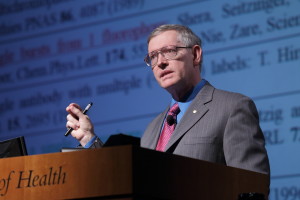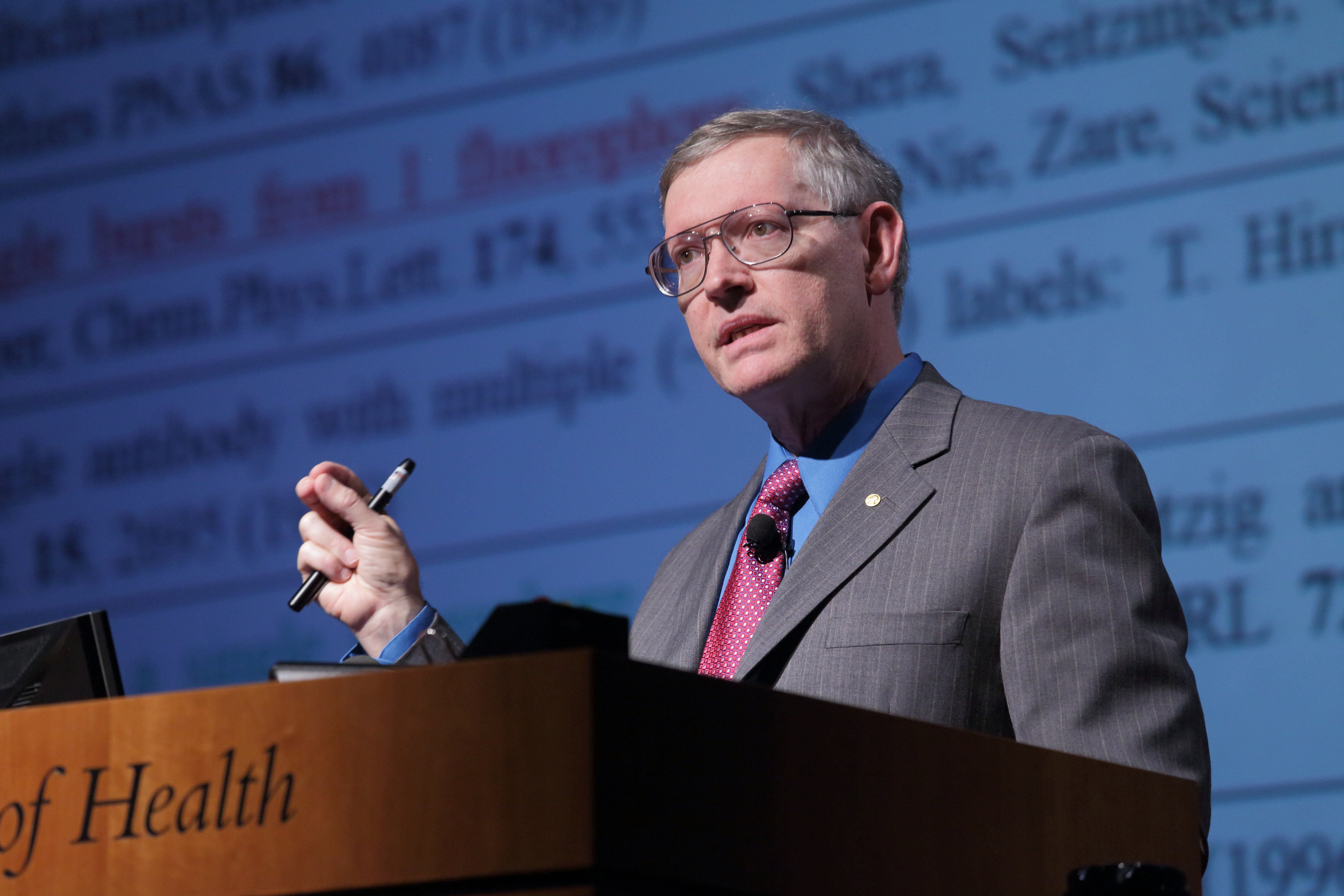
For William E. Moerner, professor in chemistry and applied physics, winning the 2014 Nobel Prize in Chemistry simultaneously opened many doors and placed more weight on his shoulders.
“My colleagues don’t treat me differently at all, but the rest of the public now puts a lot more emphasis on what I say,” said Moerner, who won the Nobel Prize for his development of super-resolved fluorescence microscopy along with Eric Betzig and Stefan Hell.
According to Moerner, his Nobel Prize is a culmination of work that started in 1989 with his research on the optical detection of a single molecule — a hydrocarbon called pentacene — inside a solid crystal. Previously, single molecules were thought to be optically undetectable. However, by tuning a laser to the molecules’ broadened absorption line at temperatures close to absolute zero, Moerner became the first scientist in the world to measure the light absorption of a single molecule.
In 1997, Moerner demonstrated that the possibility to optically control the fluorescence of single molecules by manipulating the wavelength of light on them, which made it possible to create high-resolution images of samples by taking snapshots of a few excited fluorescent proteins at different times. Through the 2000s, the Moerner Lab has been making developments in optical nanoscopy,or super-resolution microscopy, and is still continuing his Nobel-Prize-winning research.
Since receiving the prize, Moerner has had the opportunity to work in fields beyond his typical area of research, including work regarding climate change. That opportunity allowed him to attend Nobel Laureates’ Symposium on Global Sustainability held last April in Hong Kong, which focused on megacities.
This meeting was the second of a series of meetings among Nobel laureates regarding climate change this year. On the final day of the 65th Lindau Meeting, 36 Nobel laureates signed the Mainau Declaration 2015 on Climate Change, stating “that the nations of the world must take the opportunity at the United Nations Climate Change Conference in Paris in December 2015 to take decisive action to limit future global emissions.” The last Mainau Declaration was signed in 1955, in which laureates called for an end to nuclear weapons.
“I’ve always been interested in energy; some research in my lab is related to energy, specifically photosynthesis,” Moerner said. “I got concerned about environmental issues ever since Al Gore and “An Inconvenient Truth,” and how the amount of CO2 in the atmosphere has increased through human efforts. ”
While this year enabled Moerner to further his own interests in energy and environmental issues beyond his own lab’s research and focus on molecular chemistry, he maintains that he has not gotten any smarter and emphasizes the need to stay grounded.
“My wife says I still put my pants one leg at a time,” Moerner said. “I do feel responsibility in that people put more weight on what I say; I’ve been concerned about how various people in society deny science, the scientific method and statements consistent with laws of nature and reject models when measurements improve. Results can only be certain to a degree of probability. That degree of probability is then misinterpreted as ‘the science is no good’ and used against the majority.”
Contact Ruiwen Adele Shen at shen.adele ‘at’ gmail.com.
